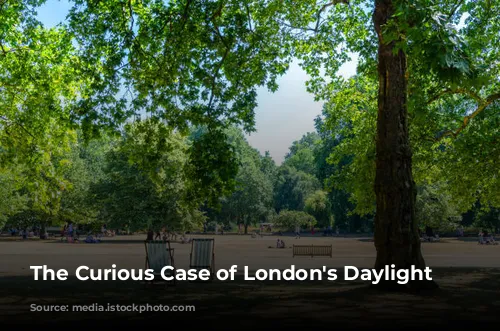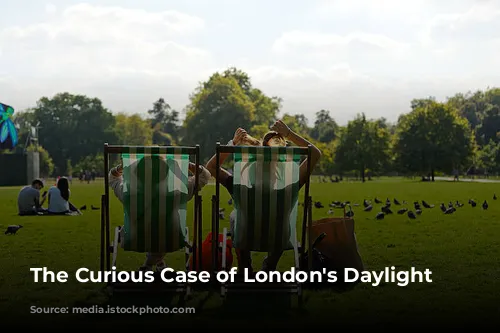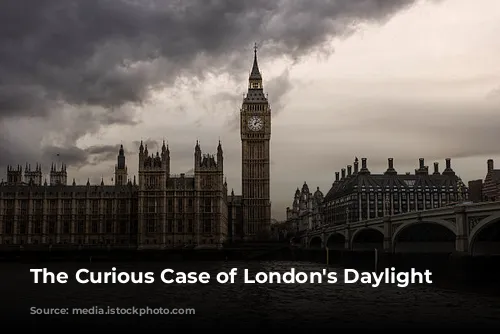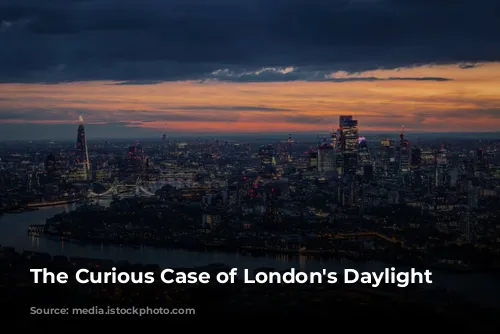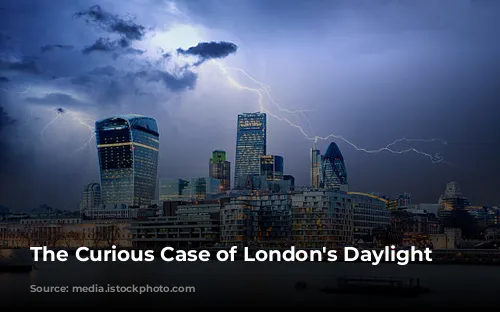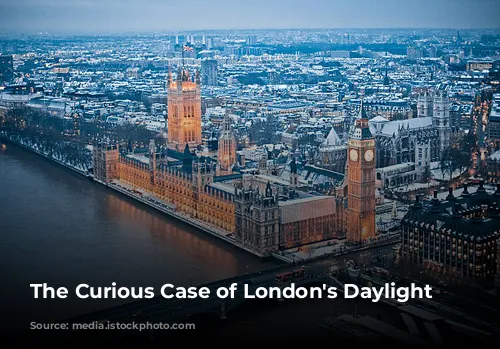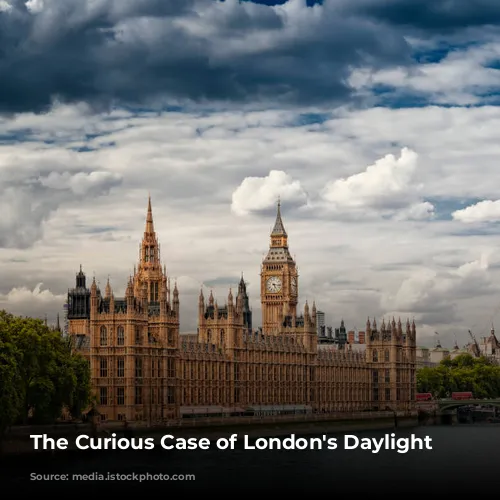Moving to London can be a delightful experience, but it comes with some unexpected surprises, particularly when it comes to the city’s unique relationship with daylight. The position of London, at a latitude of 51°30’ North, has a remarkable impact on the length of days throughout the year. As the clocks shift back in October, the days abruptly shorten, ushering in the winter season. The sun rises later and sets earlier, creating a sense of gloom as you leave for work and return home in the darkness. This stark contrast to the sunny days of California can be quite a shock!
The long summer days in London can be just as unpredictable. With the sun rising as early as 4am, it can be a struggle to get a good night’s sleep when the light streams through your windows. And getting the children to bed can be a challenge when it’s still bright outside. This disruption to sleep patterns makes the long summer days a double-edged sword. While enjoyable, the long hours of sunlight can make it difficult to maintain a regular sleep schedule. Many Londoners rely on blackout curtains to block out the early morning light and create a more restful sleep environment. These curtains are a lifesaver, especially during the summer, and they also provide some thermal insulation during the colder months.
London’s Temperate Climate: A Surprise for Some
Despite its northerly location, London enjoys a surprisingly temperate climate. This is largely thanks to the Gulf Stream, a powerful ocean current that carries warm water from the Caribbean up to Western Europe. This oceanic influence moderates London’s climate, making it warmer than you would expect for its latitude. As a result, London rarely experiences extreme cold in the winter or extreme heat in the summer. The average temperature in January hovers around 8°C (46°F), while the average high in July reaches a comfortable 22°C (73°F). While there will be some summer days when the temperature rises above 25°C (77°F) or even 30°C (86°F), these are usually brief and infrequent occurrences. Conversely, winter temperatures can dip below freezing, but most homes have heating systems to keep you cozy during the cold nights.

Dealing with London’s Rain: A Simple Approach
One aspect of London’s weather that you need to prepare for is the persistent rain. While the annual rainfall isn’t exceptionally high (around 23 inches/58 centimeters), rain seems to be a frequent visitor, often in the form of a gentle drizzle. The best way to handle this persistent precipitation is to simply have a compact umbrella or a waterproof jacket on hand. Occasionally, London experiences thunderstorms with heavy downpours, but most of the time, the rain is relatively light.

The Rare Delight of London Snow: A City Slowdown
Snow is a rare occurrence in London, much to the disappointment of the city’s children. This is partly due to the heat generated by the city’s buildings and cars, which usually prevents the temperature from dropping low enough for snow to accumulate. London is typically a few degrees warmer than the surrounding countryside. When snow does fall, however, it can bring the city to a standstill, creating widespread disruption and chaos.
The Underground and train services are particularly vulnerable to freezing weather and snow. Despite its name, the London Underground is only underground in the city center. As the lines extend outward, they go above ground, making them susceptible to the elements. Snow and ice can lead to cancellations and delays on the rail network. However, it’s London’s traffic that suffers the most during snowfall. Even a small amount of snow can create major gridlock, as drivers unfamiliar with snowy conditions struggle to navigate safely.
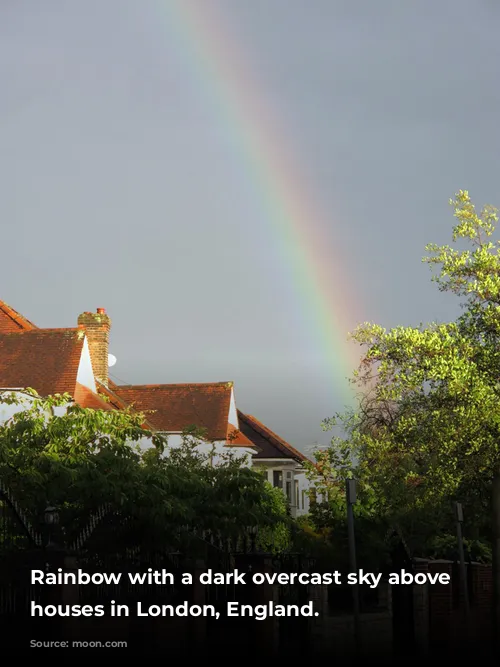
A Snow Day in London: A Tale of Gridlock and Chaos
A few years ago, I found myself stuck in a snow-induced traffic nightmare. I was driving to a mall in North London to pick up a gift when the snow began to fall. I rushed through my shopping to avoid the rush hour traffic, which I knew would be even worse due to the snow. However, my efforts were in vain, as the snow intensified, accumulating quickly. For those accustomed to snow, a couple of inches might seem insignificant, but in London, even a small amount of snow can cause major gridlock. That evening, I spent over two hours stuck in the mall’s parking lot! The snow fell too quickly, and the local authorities didn’t have enough time to salt and sand the roads. The situation was further exacerbated by the mall’s entrance and exit being located on a slight incline. One after another, drivers struggled to navigate the snowy hill, leading to accidents and widespread gridlock. Some people were even stranded in the mall overnight! This incident serves as a stark warning: when it snows in London, the city comes to a standstill until the snow melts.
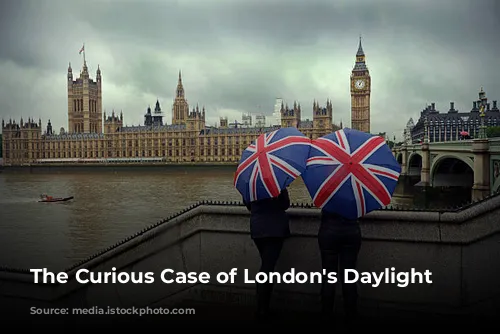
A Shifting Climate and London’s Future
It’s important to note that Britain’s typical weather patterns may be undergoing a change. After years of mild winters, recent years have seen colder temperatures and wetter conditions. This shift in weather patterns could be a natural part of long-term weather cycles or a more concerning indicator of climate change. If Britain is indeed experiencing climate change, London will need to adapt and improve its preparedness for dealing with the effects of wetter and snowy conditions.

London’s Summers: A Pleasant Surprise
On the other end of the spectrum, London rarely experiences sweltering summers. The city usually enjoys a few days of pleasantly warm weather in the low 80s (F), prompting everyone to head to the parks and enjoy the sunshine. However, it’s important to remember that London homes aren’t typically equipped for long hot summers. Air-conditioning is rarely a necessity. In my 20 years of living in London, I can only recall one unbearably hot summer, in 2003. Most other summers are characterized by dampness and occasional bursts of heat. This is something that Wimbledon tennis fans are all too familiar with!
